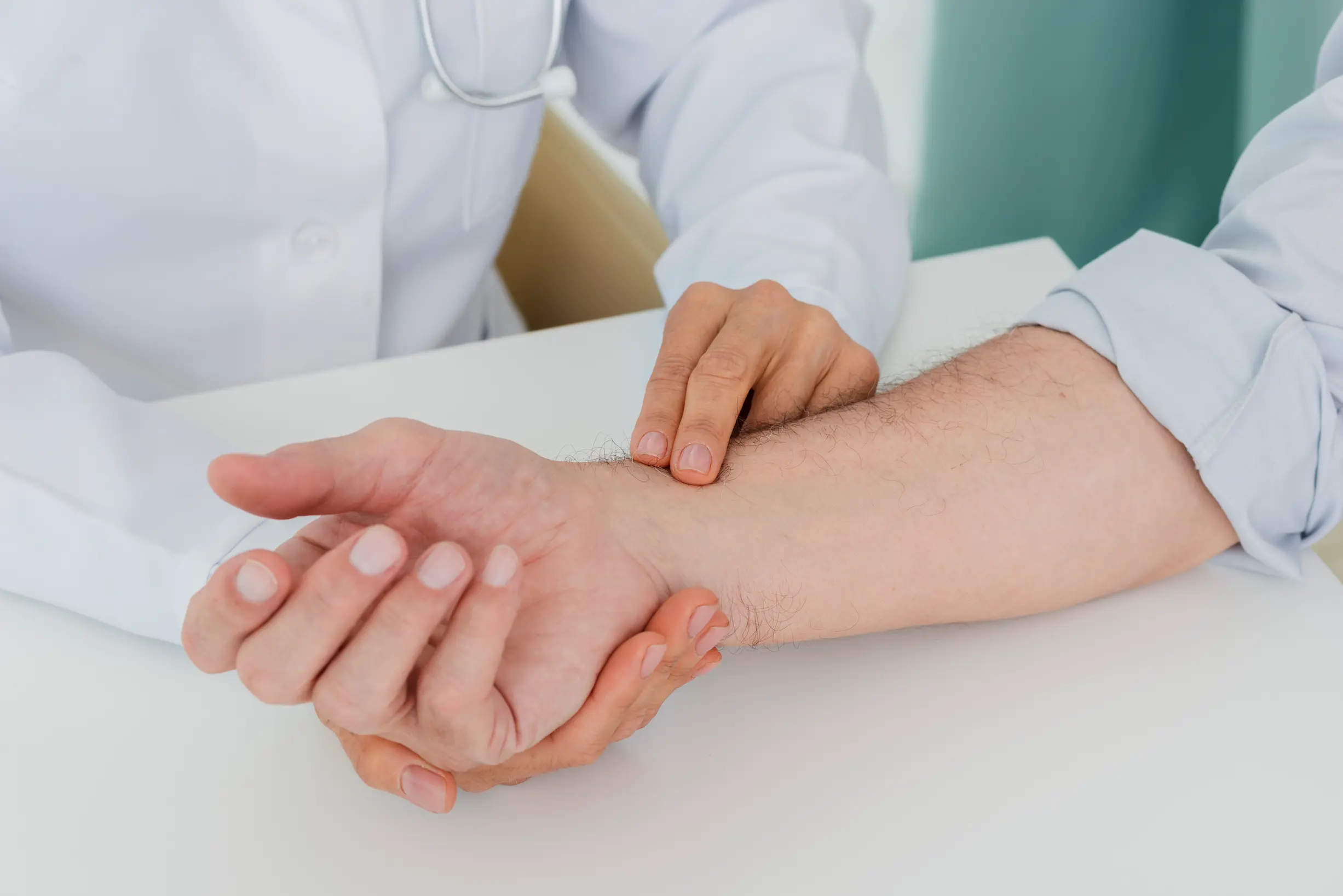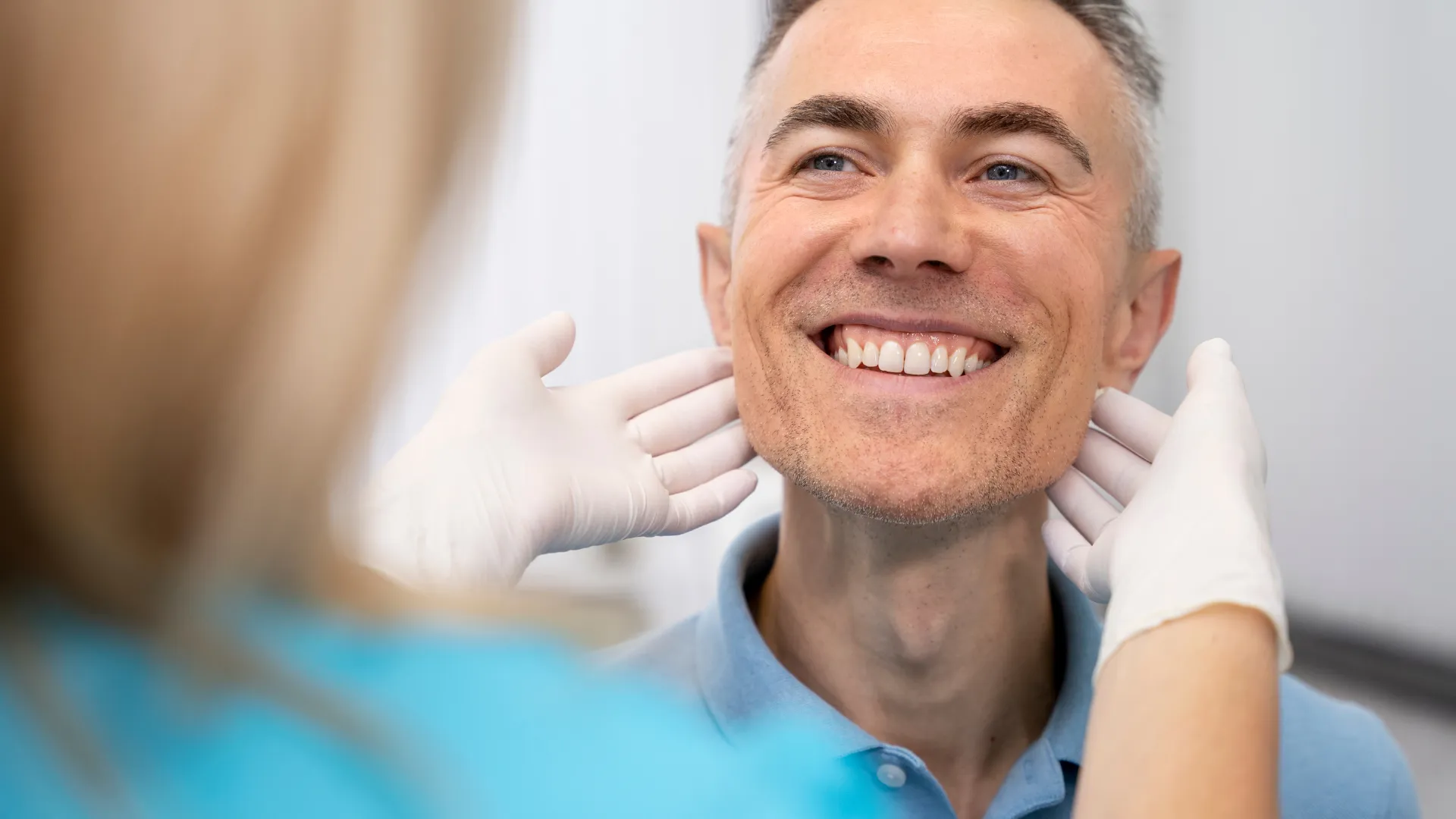Avascular necrosis of the lunate, also known as Kienböck’s disease, is an uncommon disorder that affects the wrist joint. One of the eight tiny carpal bones in the wrist, the lunate bone, gradually dies, defining the condition. An inadequate blood supply to the bone tissue causes avascular necrosis, which causes it to deteriorate and eventually collapse.
What are the Kienböck’s Disease Symptoms?
The symptoms of Kienböck’s disease, also known as avascular necrosis of the lunate bone in the wrist, might vary depending on the stage and severity of the ailment. The following are typical Kienböck’s disease symptoms:
Wrist Pain
One of the defining symptoms of Kienböck’s is persistent wrist pain, especially on the inner (ulnar) side of the wrist. Movement of the wrist or activities that apply pressure to the affected area may make the discomfort worse.
Swelling
Especially in the early stages of the disease, swelling around the wrist joint is possible.
Stiffness
Reduced wrist joint range of motion may cause stiffness, making it challenging to fully bend or rotate the wrist.
Weakness
As Kienböck’s illness advances, a person may experience a decrease in grip power and hand functionality .
Tenderness
The lunate bone area may become sensitive to touch.
Wrist Movement Difficulties or Pain
Activities requiring wrist movement, such as lifting, twisting, or grabbing, might become unpleasant and difficult to do.

What’s the treatment for Kienböck’s disease?
Kienböck’s disease treatment is determined by numerous aspects, including the stage of the disease, the severity of symptoms, and specific patient considerations. The basic goals of treatment are to alleviate pain, enhance wrist function, and prevent or reduce additional wrist joint injury. Kienböck disease stage is an important factor to consider when deciding on treatment.
Treatment alternatives may include:
Surgical Treatment
Kienböck disease surgical treatment options are the following:
– Joint leveling
Joint leveling is a surgical operation used to treat Kienböck’s disease in its early stages, often Stage II. It is also known as joint unloading or joint decompression. The goal of this technique is to shift forces inside the wrist joint in order to relieve strain on the afflicted lunate bone and facilitate recovery.
– Revascularization
Revascularization is also a treatment method used in the early stages of the disease.This surgery seeks to increase blood supply to the lunate bone, which has avascular necrosis (blood flow loss), in order to promote healing and prevent further deterioration.
– Implant arthroplasty
Implant arthroplasty is used in advanced stages of the disease.To reduce pain and restore wrist function, this operation includes replacing the injured wrist joint with an artificial joint or implant.
– Proximal row carpectomy (PRC)
Proximal Row Carpectomy (PRC) is a surgical operation used to treat advanced cases of Kienböck’s disease, usually in Stage III or IV, when the lunate bone has degenerated significantly and conventional therapeutic options are ineffective. The proximal row of carpal bones of the wrist joint are removed during PRC. The purpose of this operation is to alleviate pain, preserve wrist motion, and improve overall wrist function.
– Fusion
Wrist fusion is the surgical immobilization of the wrist joint by attaching the carpal bones to the radius bone, hence eliminating wrist motion.This method is used for advanced stages of Kienböck disease – typically stages 3 and 4 – and aims to relieve pain but may restrict wrist movements.

Nonsurgical Treatment
Nonsurgical treatments for Kienböck’s illness are usually considered in the early stages (Stage 1 and in some circumstances, Stage 2) or when surgery is not an option owing to a variety of factors. Nonsurgical treatment aims to relieve pain, reduce inflammation, and potentially slow or stop disease development. Kienböck disease non-surgical treatment include the following:
Immobilization
The use of a splint, brace, or cast to immobilize the wrist can assist in alleviating stress on the lunate bone and allow it to heal.
Medications
Non-Steroidal Anti-Inflammatory Drugs (NSAIDs)
These drugs can help relieve wrist discomfort and inflammation.
Pain Relievers
To manage discomfort associated with Kienböck’s disease, over-the-counter or prescription pain medicines may be utilized.
Physical Therapy
A physical therapist can create a personalized training program to strengthen the muscles around the wrist, increase the range of motion, and decrease stiffness. Physical treatment may be beneficial at any stage of the condition.
Activity Modification
Avoiding tasks that put too much strain on the wrist or require repetitive wrist movements may help relieve symptoms and avoid additional injury.
Why MD Burak Sercan Ercin for Kienböck’s Disease Treatment?
Your health is your most valuable asset. The decision of whom you will entrust it is not to be taken lightly; it is a critical option that will affect your overall life comfort. MD Burak Ercin is an expert who continues to make a name for himself in the profession via his experience and accomplishments. He uses his successful career as a vehicle to assist people, touch their lives, and make their dreams come true.
Choose MD Burak Sercan Ercin if you want your treatment processes to be supervised by a professional and to work with a team that has excellent interpersonal abilities and sensitivity. Contact us today and let’s take your health to the next level!
FAQ
What is the cause of Kienböck’s disease?
Kienböck’s illness is caused primarily by a disruption in blood flow to the lunate bone in the wrist, which is frequently caused by a combination of causes such as trauma and anatomical differences.
What age is Kienböck’s disease for?
Kienböck’s disease can strike anyone at any age, however, it is most typically diagnosed in those between the ages of 20 and 40.
How rare is Kienböck’s disease?
Kienböck’s disease is a rather uncommon ailment with a low frequency in the general population. Exact figures on the number of people affected by Kienböck’s disease vary by location and throughout time.
Is Kienböck’s genetic?
Kienböck’s disease is not considered a genetic ailment, which means that it is not caused by specific genetic mutations or inherited in a Mendelian pattern like some other medical conditions.
What happens if Kienböck’s disease is left untreated?
Kienböck’s illness, if left untreated, can cause chronic wrist pain, loss of wrist function, arthritis, deformity, and problems from pain medications, negatively compromising the patient’s quality of life.
How long is Kienböck disease surgery recovery time?
The time it takes to recuperate from surgery for Kienböck’s illness depends on the precise surgical operation, the individual patient, and the surgical strategy used.











